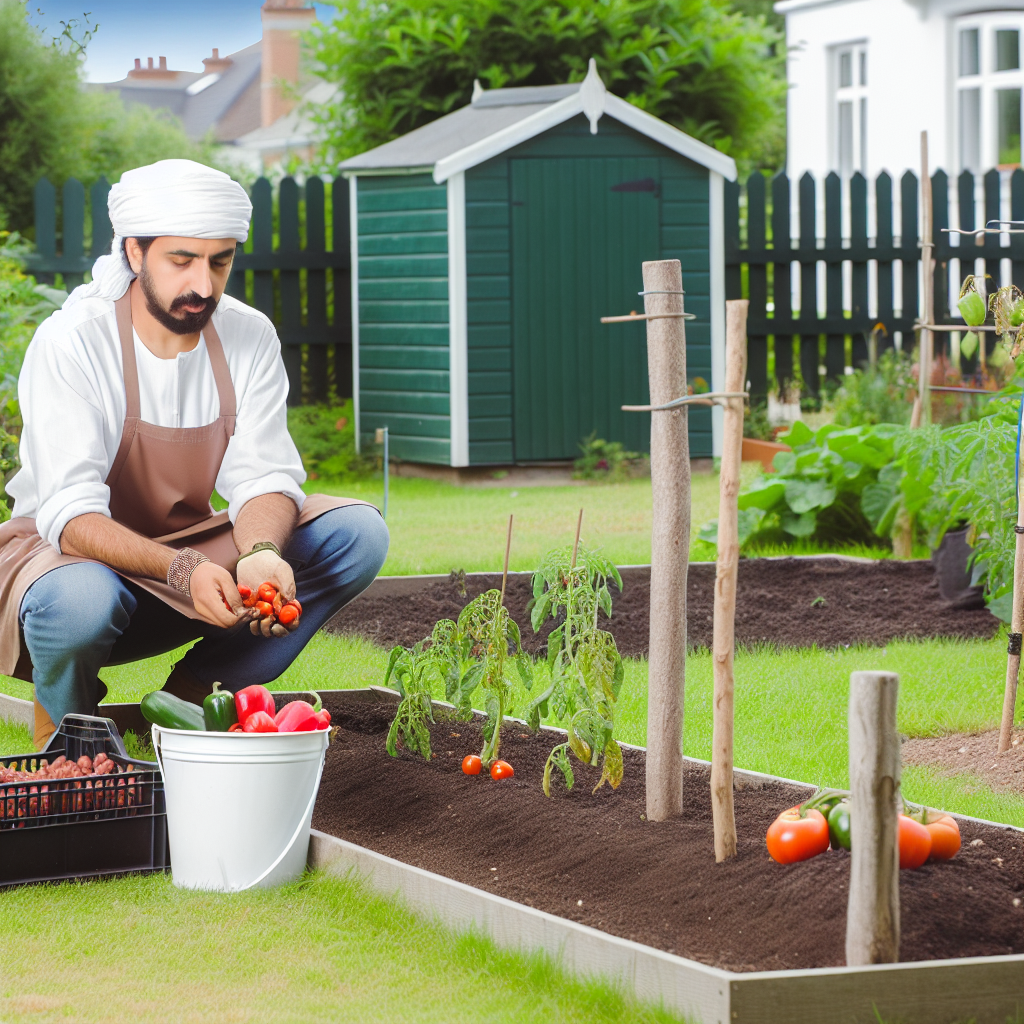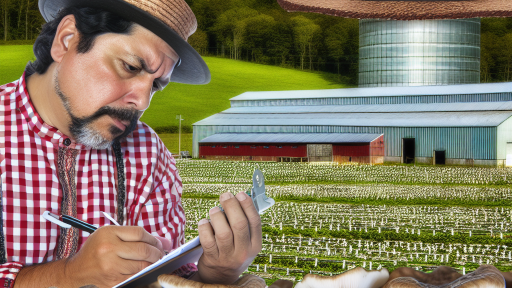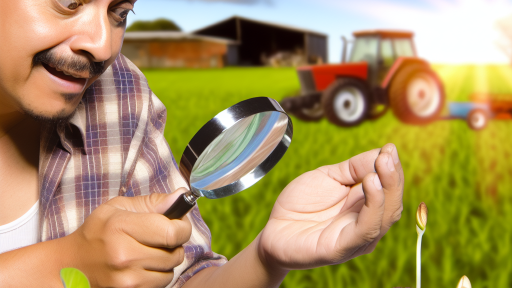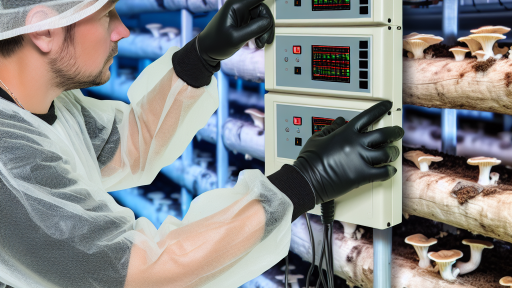Understanding the Importance of Seed Saving in Sustainable Agriculture
Preserving Biodiversity
Seed saving plays a crucial role in preserving biodiversity.
By saving seeds, gardeners maintain a variety of plant species.
This practice supports local ecosystems and habitats.
It also enhances resilience against pests and diseases.
Reducing Dependence on Commercial Seeds
Seed saving reduces the reliance on commercial seed suppliers.
It empowers gardeners to cultivate their own food sources.
By using saved seeds, growers understand their plants better.
This knowledge strengthens local agriculture and sustainability.
Lowering Costs
Saving seeds can significantly lower gardening costs.
Purchasing seeds each year can be pricey.
Instead, saved seeds provide a budget-friendly option.
This approach allows more resources for other gardening needs.
Enhancing Flavor and Quality
Home-saved seeds often produce richer flavors.
Gardeners select their best plants for seed saving.
This practice leads to superior quality crops year after year.
Transform Your Agribusiness
Unlock your farm's potential with expert advice tailored to your needs. Get actionable steps that drive real results.
Get StartedGardens become unique, reflecting the grower’s preferences.
Contributing to Local Resilience
Seed saving fosters self-reliance within communities.
It strengthens local food systems and networks.
By sharing seeds, gardeners build connections.
This community approach enhances food security and sustainability.
Promoting Cultural Heritage
Seed saving connects people to their agricultural roots.
It carries forward heirloom varieties through generations.
This practice safeguards cultural and agricultural traditions.
Moreover, it fosters a sense of belonging within communities.
Choosing the Right Vegetables for Seed Saving
Understanding Seed Adaptability
Not all vegetables are suitable for seed saving.
Some crops hybridize easily and produce unreliable seeds.
Thus, focus on open-pollinated varieties for better results.
These varieties ensure that seeds remain true to type.
Additionally, research local climate suitability for plants.
Prioritizing High-Yielding Crops
Select vegetables that thrive in your growing conditions.
Choose those that historically yield abundant produce.
For example, tomatoes and beans often perform well.
Furthermore, consider root vegetables, as they also store well.
These crops offer a reliable source of seeds for future seasons.
Assessing Disease Resistance
Choose varieties that show resistance to common diseases.
Identifying hardy plants may reduce your gardening challenges.
Look for heirloom varieties with established disease resistance.
Healthy plants yield better seeds, enhancing future crops.
Make a note of which plants thrive in your garden.
Showcase Your Farming Business
Publish your professional farming services profile on our blog for a one-time fee of $200 and reach a dedicated audience of farmers and agribusiness owners.
Publish Your ProfileConsidering Flavor and Use
Flavor plays a crucial role in selecting vegetables for seed saving.
Pick varieties that you enjoy eating and cooking with.
This will ensure you continue to grow these plants each season.
Moreover, consider plants that fit your gardening space and style.
For instance, compact varieties work well in limited spaces.
Examining Seed Longevity
Some seeds remain viable for years, while others do not.
Research and choose seeds known for longer shelf lives.
This can save you time and effort in future planting seasons.
Proper storage also impacts seed longevity and viability.
Store seeds in a cool, dry environment to maximize lifespan.
Basic Principles of Plant Breeding for Seed Quality
Importance of Genetic Diversity
Genetic diversity fosters resilience in plant populations.
It enables plants to better adapt to changing environmental conditions.
Additionally, it enhances pest resistance and disease tolerance.
Selection of Parent Plants
Selecting healthy parent plants is crucial for quality seeds.
Choose plants that thrive in your specific growing conditions.
Moreover, prioritize plants with desirable traits like disease resistance.
Identifying Key Traits
Focus on traits such as yield, flavor, and growth rate.
Also, consider abiotic stress tolerance, like drought and heat resistance.
Evaluate how these traits perform over seasons.
Breeding Techniques
Utilize techniques like cross-pollination to create new varieties.
Ensure proper timing to achieve successful pollination.
Additionally, consider self-pollination for stable trait inheritance.
Maintaining Seed Integrity
Avoid mixing different seed varieties during harvesting.
Use isolation techniques to prevent cross-contamination.
Label all seeds clearly to keep track of their origins.
Evaluation of Seed Quality
Conduct regular assessments of seed viability.
Perform germination tests to check seed health.
Look for uniformity in size and appearance when evaluating seeds.
Documenting the Process
Keep detailed records of breeding processes and results.
Document environmental conditions and any challenges faced.
This information helps refine future breeding efforts.
Storage Practices
Store seeds in a cool, dry place to maintain viability.
Use airtight containers to reduce humidity exposure.
Label containers with date and variety information for easy tracking.
Delve into the Subject: Sustainable Water Practices in Organic Farming
How to Properly Collect Seeds: Timing and Techniques
Understanding the Right Timing
Timing is essential when collecting vegetable seeds.
Seeds should be harvested when they are fully mature.
Observe the plant for signs of maturity, such as drying leaves.
Check that seed pods are brown and brittle.
Harvesting too early can lead to poor seed viability.
Showcase Your Farming Business
Publish your professional farming services profile on our blog for a one-time fee of $200 and reach a dedicated audience of farmers and agribusiness owners.
Publish Your ProfileMonitoring Weather Conditions
Weather plays a significant role in seed collection.
Avoid harvesting seeds during wet conditions.
Water can cause mold and reduce seed quality.
Choose a sunny day to ensure seeds are dry.
Developing a Collection Technique
Use sharp scissors or garden snips for clean cuts.
This helps prevent damage to the plant and seeds.
Hold seed pods above a container to catch falling seeds.
Be gentle to avoid losing valuable seeds.
Storing Your Seeds Safely
Proper storage is crucial for seed longevity.
Store seeds in a cool, dry place away from direct sunlight.
Consider using glass jars or envelopes for organization.
Label each container to know the variety and date collected.
Testing Seed Viability
Before planting saved seeds, test their viability.
Use the damp paper towel method for testing.
Place a few seeds on a wet paper towel and wait for germination.
This will indicate if seeds are still viable for planting.
See Related Content: Benefits Of Seed Saving For Sustainable Agriculture
Methods for Cleaning and Drying Seeds
Importance of Cleaning Seeds
Cleaning seeds ensures they are free of debris and pathogens.
This process enhances the seeds’ viability and longevity.
Additionally, clean seeds promote healthier plant growth.
Basic Cleaning Techniques
Start by removing any large debris by hand.
Next, use water to rinse smaller particles off the seeds.
For further cleaning, consider using a sieve or strainer.
Dry the seeds gently after washing them.
Avoid soaking seeds for long periods, as this can damage them.
Advanced Cleaning Methods
Fermentation is an effective technique for some seeds.
This method helps eliminate pulp and mucilage effectively.
First, place seeds in water and let them sit for several days.
Afterward, rinse the seeds thoroughly to clean them.
Drying Seeds Properly
Drying seeds prevents mold and maximizes storage life.
Spread seeds in a single layer on clean paper or screens.
Ensure they are in a cool, dark, and dry place.
Rotate the seeds occasionally for even drying.
Consider using a fan to expedite the drying process.
Testing Seed Moisture
Use a moisture meter to check seed dryness accurately.
Seeds should generally have a moisture content below 8 percent.
Store seeds only after ensuring they are completely dry.
Storage Solutions
Choose breathable containers for seed storage.
Glass jars or paper envelopes work well for most seeds.
Label each container with the seed type and date collected.
Showcase Your Farming Business
Publish your professional farming services profile on our blog for a one-time fee of $200 and reach a dedicated audience of farmers and agribusiness owners.
Publish Your ProfileStore seeds in a cool, dark location to prolong viability.
Learn More: Low-Maintenance Edible Landscaping Ideas

Storing Seeds: Best Practices for Longevity
Choosing the Right Containers
Select airtight containers for storing seeds.
Glass jars work exceptionally well for this purpose.
Alternatively, you can use plastic containers with tight seals.
Label each container clearly to avoid confusion.
Optimal Storage Conditions
Maintain a cool and dry environment for seed storage.
Avoid exposure to light, as it can degrade seed quality.
Choose a location with stable temperature and humidity levels.
Consider using a refrigerator if possible for longer storage periods.
Monitoring Seed Viability
Regularly check seeds for signs of mold or spoilage.
Conduct a germination test before planting older seeds.
This will ensure they still have the power to grow.
Count the number of seeds that sprout to assess viability.
Timeframe for Seed Viability
Understand that different seeds have varying shelf lives.
For instance, tomato seeds can last up to five years.
On the other hand, cucumber seeds typically last just three years.
Keep this information handy when storing various types of seeds.
Find Out More: Organic Techniques for Growing Mushrooms Sustainably
Recognizing and Preventing Seed-borne Diseases
Understanding Seed-borne Diseases
Seed-borne diseases originate from infected seeds.
These diseases can spread rapidly in the garden.
Identifying these diseases early is crucial for effective management.
Some common seed-borne diseases include bacterial blight and fungal infections.
Identifying Symptoms
To prevent the spread of diseases, observe your plants closely.
Plants showing wilting, discoloration, or stunted growth may be affected.
Look for unusual spots or lesions on leaves and stems.
Seeds with discoloration or mold are likely infected too.
Prevention Strategies
Start by selecting disease-free seeds for planting.
Purchase seeds from reputable suppliers like GreenFields Seeds.
Rotate crops yearly to reduce disease buildup in the soil.
Implement proper sanitation practices in your garden.
Soil Health Management
Healthy soil promotes strong plants that can resist diseases.
Regularly test soil for nutrient content and pH balance.
Add organic matter to improve soil structure and fertility.
Consider planting cover crops to enhance soil health during off-seasons.
Good Gardening Practices
Practice proper spacing to improve air circulation among plants.
Water plants early in the day to allow moisture to evaporate.
Avoid overhead watering to minimize humidity around foliage.
Regularly inspect plants and remove any infected parts immediately.
Documentation and Labeling for Effective Seed Management
Importance of Record-Keeping
Keeping accurate records is essential for successful seed saving.
Showcase Your Farming Business
Publish your professional farming services profile on our blog for a one-time fee of $200 and reach a dedicated audience of farmers and agribusiness owners.
Publish Your ProfileIt helps track the origins of each seed variety.
Documentation also provides insights into growing conditions.
These records guide adjustments for future planting seasons.
Essential Information to Document
Start by noting the seed variety name.
Include the date of collection for reference.
Document where and how the seeds were collected.
Record any specific growing conditions that may affect quality.
Additionally, keep track of any pest or disease issues encountered.
Effective Labeling Practices
Proper labeling is vital for seed organization.
Utilize clear, waterproof labels for durability.
Include key details such as the variety name and collection date.
Color-coded labels can enhance visual organization.
Make sure labels are legible and easy to read.
Organizing Your Seed Collection
Sort seeds by category for easier management.
Consider grouping them by family or growing season.
Store seeds in airtight containers to maintain freshness.
Label containers clearly to avoid confusion.
Regularly check the condition of stored seeds.
Utilizing Technology for Seed Management
Use digital tools for tracking seed information.
Consider apps that specialize in gardening and seed saving.
These platforms can simplify record-keeping and organization.
Cloud storage options ensure data is backed up and accessible.
Technology can enhance collaboration with fellow gardeners.
Additional Resources
How to Grow More Cut Flowers than You Ever Thought Possible …




